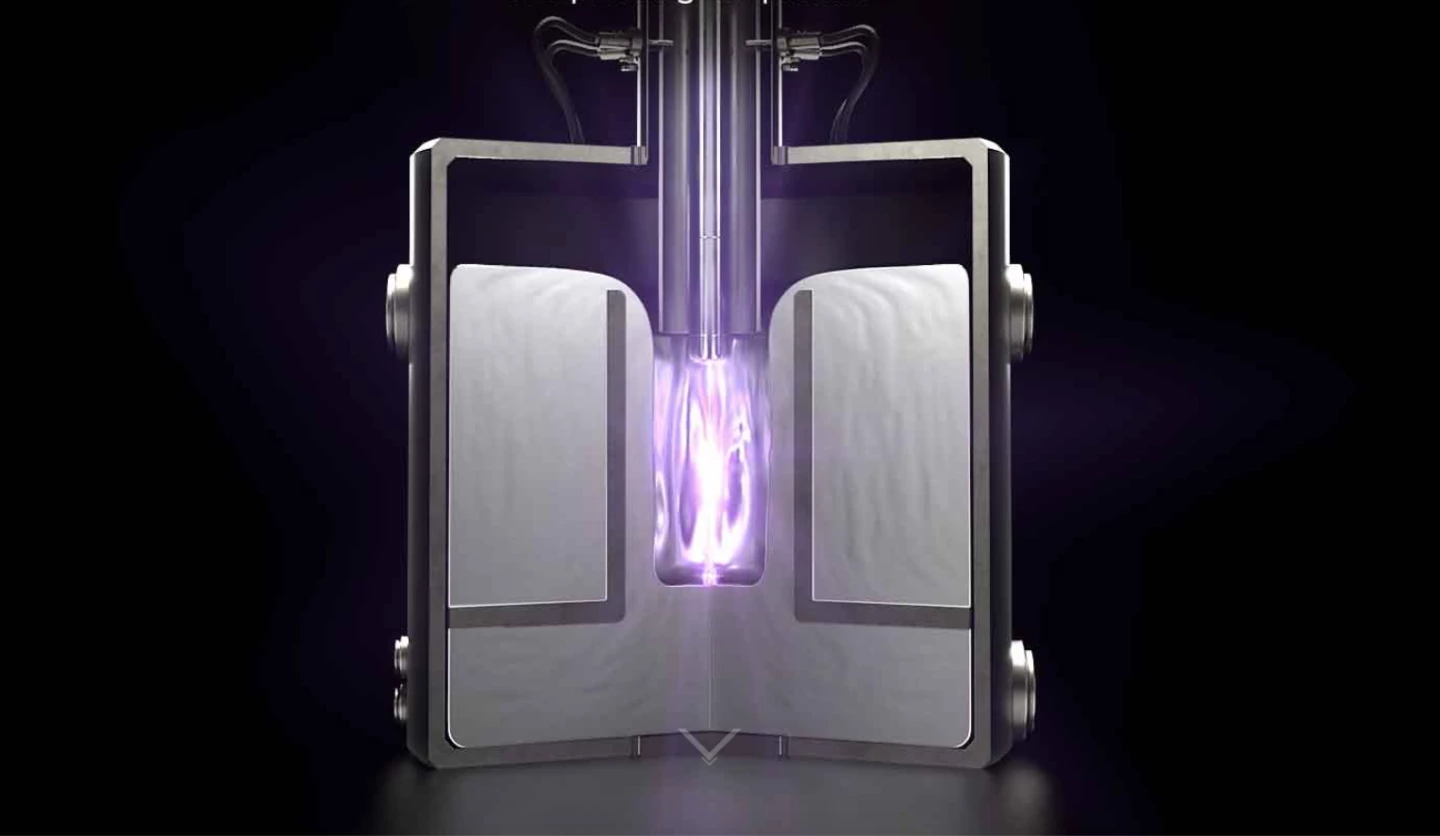Nuclear fusion is an incredibly complex scientific problem that researchers are coming at from all sorts of angles, and Zap Energy is starting to make waves through one of the lesser-known approaches. The Seattle-based startup has achieved a major milestone for its Z-pinch fusion technology, and is now working to make it a commercial reality via modular, garage-sized reactors that could be scaled up to bring this experimental form of energy to the grid.
Nuclear fusion research aims to recreate the process inside the Sun, where intense heat and pressure combine to create plasma in which atomic nuclei fuse together to release energy. Much of the effort in this field is focused on suspending these streams of plasma inside reactors shaped like donuts or twisted loops using incredibly complex magnetic fields, and this will be the name of the game at ITER, the world's largest nuclear fusion reactor set to commence operation later this decade.
Z-pinch presents a very different path forward, but one that could ultimately prove cheaper and more efficient. That's because rather than intricate webs of expensive magnetic coils and costly shielding materials to protect them, Z-pinch systems rely on an electromagnetic field that is generated within the plasma itself. This pins the plasma in place inside a relatively short column and "pinches" it until it becomes hot and dense enough for nuclear fusion to occur.

In 2019, we looked at work from a group of University of Washington scientists who had come up with a solution to instability problems that have plagued Z-pinch technology since its inception in the 1950s. Using what's known in fluid dynamics as sheared axial flow, the team demonstrated a way of smoothing out the plasma streams to prevent bulges and distortions that historically cause them to collapse.
Meanwhile, one of the authors of that study, Uri Shumlak, has been looking to leverage this sheared axial flow technique to make Z-pinch fusion technology a reality, having co-founded Zap Energy in 2017. Last week, the outfit achieved a key milestone in its journey, creating the first plasmas inside its prototype reactor, called the FuZE-Q.
“Z-pinch has long been an appealing way to achieve nuclear fusion, but for many years researchers considered Z-pinch’s plasma instabilities to be an insurmountable challenge,” says Shumlak, who serves as Zap Energy’s Chief Science Officer. “We’ve shown through both simulation and experiment that sheared flows can stabilize fusion plasmas, and that the stability should extend to a commercially viable scale. The Zap Energy team has made rapid progress since this technology moved out of the lab, especially with recent team and investment growth."

The team had previously demonstrated plasmas with an electrical current of 500 kiloamps (kA), the highest its previous prototype reactors could handle. But the higher the current, the hotter and denser the plasma becomes, and with this in mind the next-generation FuZE-Q is designed to accommodate currents of 650 kA. The team's scientific modeling indicates that this is the point at which breakeven will occur, where the energy coming out of the device is greater than what is needed to operate it, referred to as Q=1.
"FuZE-Q is the fourth generation of Z-pinch device that we’ve built and is undoubtedly the most ambitious," says Brian A. Nelson, Chief Technology Officer of Zap Energy. "We designed it to be versatile, resilient and tunable in lots of ways that will be critical as we ramp to higher currents, temperatures and densities."
The Zap Energy team has just closed a US$160-million Series C funding round, which will further its efforts to bring its form of fusion energy to market. With no need for expensive magnets or high-powered lasers as seen in other approaches, the company envisions achieving this with mass-manufactured reactors that are small enough to fit inside a garage. These modular devices could be deployed to provide power to remote communities or combined and scaled up to provide energy to entire cities.

“To be a practical energy source, we need to go well beyond Q=1, but if you want to get fusion on the grid in time to make a difference to the planet, then the ability to iterate quickly on a small, cheap platform, is absolutely vital,” said Zap Energy President Benj Conway. “We can design, build and test systems at a much faster pace than other approaches, and we are working on technology in parallel that we are going to need on the other side of breakeven.”
Source: Zap Energy







